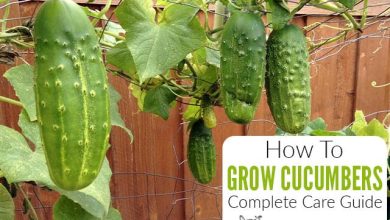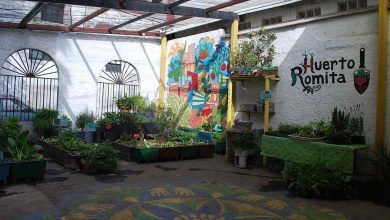Planting Peppermint: [Care, Cultivation, Irrigation, Substrate and Pests]

Important points when planting mint:
- When? During spring.
- Harvest time or growth? You can start harvesting at the end of Spring and until
 Autumn.
Autumn. - Where? Place that receives between 4-6 hours of sunlight. Also some shade.
- How do we prepare the land? It needs a soil rich in organic matter. Humus and animal manure is usually ideal.
- How do we water? It is picky about water. The more we water, the more it will grow.
- How do we sow? Here step by step.
- How do we harvest? We can prune the mint as we need it.
- Favorable associations? It pairs well with tomatoes and cabbages.
- Associations NOT favorable? The Mint.
- Plagues and diseases? Aphid, whitefly, rust, powdery mildew and anthracnose » target=»_blank» rel=»noopener noreferrer»>anthracnose.
learn howplant mintand enjoy it in your kitchen throughout the year.
Peppermint is an aromatic herb, like oregano, belonging to the genus mentha.
It has different medicinal and gastronomic applications, in addition to being widely used to make sweets, chewing gums and essences of all kinds.
Best of all, it’s yourcultivation is quite simple.
In this article we tell you the most effective way so that you never lack peppermint at home.
When to plant mint?
We will plant mint during the spring.If you live in warm regions, you can sow it in the fall.
Harvest: It can give several harvests a year.
Where to grow peppermint?
To prevent it from drying out, it should be exposed to a moderate amount of light.
It is advisable to plant mint in an area where it receives sunlight during the day and a little shade in the afternoon.
Ideally, they receivebetween 4 and 6 hours of light a day and the rest in shade.
The ideal temperature is between a constant 15 and 30 ºC.
Recommendations:
- Locate your plants next to a tree to ensure they receive a moderate amount of light.
- Being an easy-to-grow plant, you can plant it in pots. This will allow you to control the temperature and the amount of light it receives.
How do we water peppermint? Humidity
Peppermint requires a lot of moisture. In fact, the more you water it, the more it grows.
Optimum relative humidity is 70 to 80.
Recommendations:
- Preferably make drip irrigation to regulate the flow of water. This also keeps the foliage dry and prevents the appearance of fungi.
- The frequency of watering will depend on the particular conditions, however, you must always keep the soil moist, avoiding waterlogging.
- In soils with good drainage, it supports daily watering very well.
How do we prepare the soil? Substrate and nutrients
 Although they adapt relatively well to most soils, they do not tolerate very limestone ones, nor those that are deficient in terms of nutrients.
Although they adapt relatively well to most soils, they do not tolerate very limestone ones, nor those that are deficient in terms of nutrients.
They do not usually grow in very dry substrates or with many stones, as they prevent the root development of the plant.
The ideal soil should be loose, very moist and fresh, well drained and with sufficient organic matter.
The optimal pH ranges between 5.8 and 7.0
In terms of nutrients, mint is quite demanding, so it is convenient to work the substrate well and add a good amount of nutrients.
The best natural fertilizers arehumus and old manure.
Another recommendation is to plant peppermint in a fairly spacious place, since peppermint grows very easily and expands in the same way.
Recommendations:
- If you plant in a pot, make sure that it is at least 30 cm in diameter and 40 cm deep.
- Dark compost is recommended to keep the soil moist and warm.
- If your garden or orchard tends to flood, you need to do everything you can to fix it. Add a good amount of mulch, compost, peat or manure to fluff up the soil and aerate it.
How to plant peppermint step by step [14 Steps]
- Clear the ground.It removes weeds and remains of previous crops and all kinds of residues to ensure that the mint receives the correct amount of nutrients.
- Moisten the soil before planting mint.This will facilitate the root development of the cuttings. Also, if you plant from seed, the moisture in the soil will prevent the seed from moving easily.
- Fertilize the soil.Spread some humus on the soil to improve the overall quality before you start planting the cuttings.
- The ideal is to sow peppermint from cuttings of another plant, since it is very difficult to grow it from seed.In certain varieties, it even becomes practically impossible. Cut a branch of about 1 cm and place it in a glass of water.
- After a week, roots will begin to emerge. Wait another week to allow the roots to reach an acceptable length. You can add water to the glass as you consider necessary.
- Introduce the cutting 5 cm deep, ensuring that the soil is flush.If you are growing peppermint from seeds, bury them no more than 3 centimeters deep. Cover them lightly.
- If you plant in soil, remember to keep a separation distance of between 15 and 30 centimeters between each plant.
- Water often.This is important, especially during the first year. Make sure that the soil is always moist, but not waterlogged.
- Fertilize regularly. Although peppermint grows easily, you can add compost once a month to ensure it has the required nutrients.
- Prune your plants.It is recommended to cut the upper part of the plant to prevent it from growing vertically and stimulate more foliage, which translates into a better harvest.
- You’ll also need to cut back the flower buds to keep the plant compact, otherwise your plants can spread out of control. This will prolong the harvest season.
- Divide the bushes.Because peppermint grows extremely easily, it is recommended that you divide it into several plants from time to time. It is best to do it during the month of April. To do this, carefully pick up the plant from the roots and divide it into two or three plants.
- Plant each one immediately 5 cm deep and making sure to water abundantly. You can do this every 3 or 4 years. This helps keep the mint smelling and tasting nice.
- Check your plants regularly to avoid pests and diseases. If you like, you can apply a fungicidal spray to counteract mildew.
The harvest and collection of mint
 You can harvest fresh leaves fromlate spring to early fall.
You can harvest fresh leaves fromlate spring to early fall.
Cut fresh branches to use directly. If you want to keep them, you can pluck leaves and flowers and let them dry.
Store them without light so that it does not affect the leaves.
Never harvest more than 1/3 of the leaves at a time.
To learn more: How to transplant peppermint.
Peppermint Favorable Associations
They associate well with tomatoes and cabbages, enhancing their flavor.
They don’t associate very well with other mint varieties.
In fact, if you also want to grow mint in your garden, you should not put it near peppermint, since the latter tends to prevail.
Common pests and diseases
aphids
To combat the aphid, potassium soap can be applied to the underside of the plants.
If the plague persists or is very abundant, after cleaning the leaves with soap, we will apply neem extract, which will act as an insecticide.
White fly
We find the whitefly on the underside of leaves and flowers. They cause yellowish spots on the leaves.
To prevent them, it is recommended to spray the underside of the leaves with 1% potassium soap with rain or distilled water.
Rust
It attacks the aerial part of the plant, mainly the leaves and stems, where red or orange powdery masses appear.
The recommended treatment is based on trichoderma, an antagonistic fungus. You can also make uses of horsetail.
powdery mildew
It is best to install a drip irrigation system and apply horsetail as prevention.
It also works to eliminate weeds and crop residues and favor the ventilation of the crop.
anthracnose
Anthracnose is a disease of plants with very wet substrates.
It causes spots on the leaves and necrosis on the stems, which often lead to wilting and death of the tissues.
To prevent it, it is recommended to install a drip irrigation system and apply horsetail. As well as favoring the good ventilation of the plants.

![Photo of Plant Bird’s Nest: [Planting, Care, Irrigation and Substrate]](https://www.complete-gardening.com/wp-content/uploads/2022/08/plant-birds-nest-planting-care-irrigation-and-substrate-390x220.jpg)

![Photo of Chlorosis in Plants: [How to Detect, Combat and Control It]](https://www.complete-gardening.com/wp-content/uploads/2021/06/Qué-es-la-clorosis-390x220.jpg)
